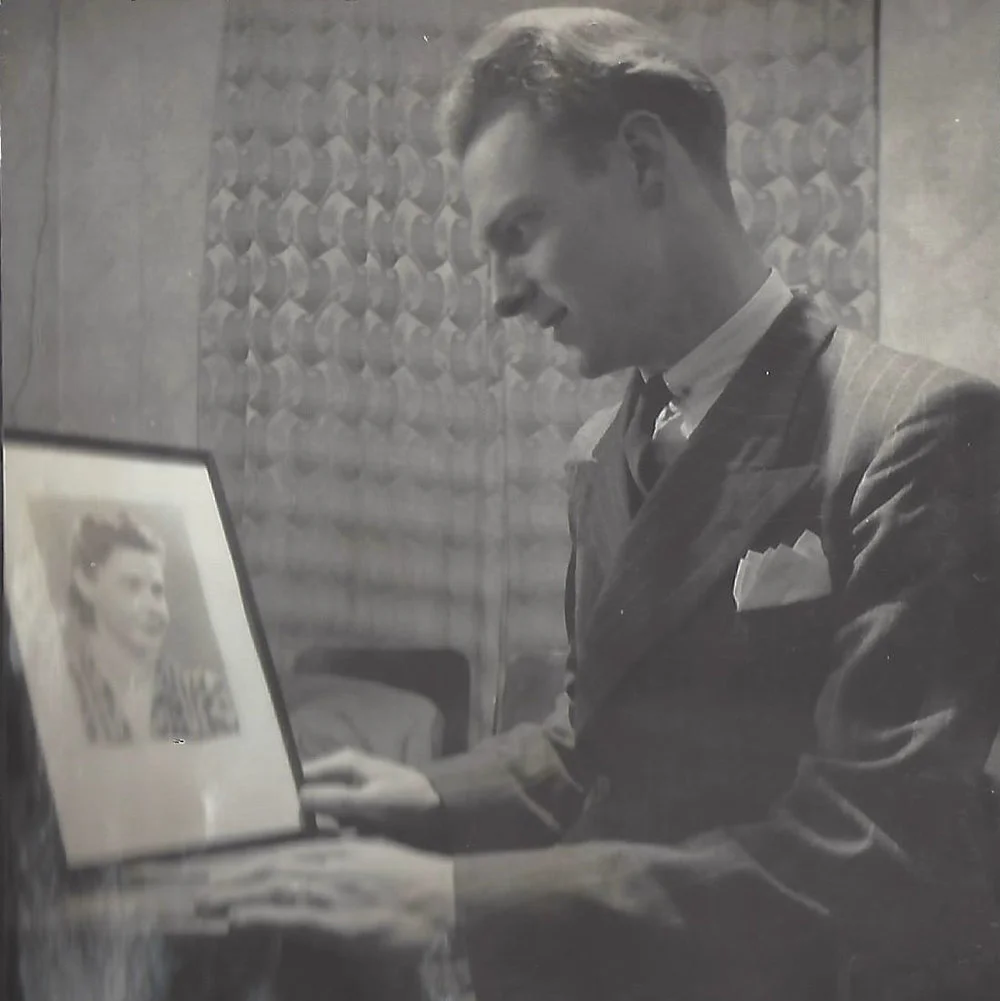Bletchley Park – and the stories of the women who worked there during World War Two – is of keen personal interest to me. My Gran, Irene, was one of those women. She took the Official Secrets Act very seriously, and never told me much about it. So I jumped at the chance to read Tessa Dunlop’s book The Bletchley Girls and learn more.
Bletchley Park has undergone an extraordinary conversion over the past decades, from top-secret code-breaking factory to globally acknowledged key player in both the second world war and the development of the computer. Nowadays we all know about Enigma, the genius of Alan Turing, and how the German codes were broken and the war won: Bletchley Park has taken its rightful place in history.
What is still less well known is that a large proportion of those who worked at Bletchley were women. Dunlop sets out to explore this in her new book, The Bletchley Girls: War, Secrecy, Love and Loss: The Women of Bletchley Park Tell Their Story. In it, she interviews 13 women who worked at Bletchley during the war, and combines their stories together, working chronologically from the late thirties to the mid forties, and beyond.
My Gran – born Irene Rose Mary Roblou in London in 1920 – was a decoder at Bletchley Park from May 1942 to September 1943. When she joined, she was a young woman with an incomplete secondary school education, already a war widow, and away from home for the first time. Her name then was then Irene Macdonald. She had met Alec MacDonald (Mac) before the war at The Shipbuilding Conference (the professional association of shipbuilders), where they both worked. It was on Grosvenor Place, overlooking Buckingham Palace garden, and Gran claimed she occasionally saw Princesses Elizabeth and Margaret there.
Irene (right) with her parents in their London flat, circa 1940. No known copyright restrictions.
Irene and Mac fell in love as teenagers. Gran wrote: “We went dancing … attended the odd cinema and concert, although Mac adored jazz as well [as did my grandfather] – I discovered The Melodymaker and somebody named Jack Teagarden! We tried playing tennis but he was so good he knocked my racquet out of my hand. But we had fun in the open-air swimming pool. He insisted I read all [of] Somerset Maugham.” They became engaged in (I think) 1940. “We were walking across Hyde Park when he began to describe where he would like to take me on our honeymoon in Trinidad, but that honeymoon would have to wait until the war was over. I said I couldn’t go on my honeymoon without a proposal. He said ‘I’m not askin’ ya, I’m tellin’ ya.’ I said I wasn’t going to be the only girl on honeymoon without a proposal. So he said ‘Will you marry me’ and I said ‘Yes please’.”
Mac and Irene were married on 17 January 1942 at Christ Church, Woburn Square, London. Gran wrote: “After the reception at the Berners Hotel, we went to a tea dance at Hatchetts in Piccadilly where Stephane Grappelli was playing, and caught the train to Torquay the next day for our English honeymoon!” Ten days later, Mac was shipped out as part of the Fleet Air Arm. On 12 February, his ship was attacked by German aircraft in the Mediterranean and a piece of shrapnel went into his head. He was the only one on the ship to die. He was 21.
Irene and Mac on their wedding day, 17 January 1942. No known copyright restrictions.
I only learned about Mac’s existence a few years ago, when my Gran was still alive, and I was living in England. If he hadn’t died, Gran wouldn’t have married my grandfather, Leslie Victor Heritage (Bill); she wouldn’t have given birth to my father, and I wouldn’t exist. It is a strange and uneasy debt. Seeking to better understand this, I made a special trip to Malta in 2007, to visit his gravestone. I found it in a tiny cemetery not far from Mdina, dusty white stone warmed by the sun. I sat there, sweating uncomfortably in the jaw-dropping Maltese heat, and tried to wrap my head around the fact that I live in part because he was killed.
Most of what I know about Mac I have learned from a “A Wartime Love Story”, a brief memoir Gran typed out to accompany the deposit of her first wedding dress into the collections of the Imperial War Museum. He was born in Trinidad in 1920, elder of two sons of a Scottish father and Irish mother, Mabel. He was sent to school in England when he was a boy, during which time his father died. He doesn’t seem to have seen his mother and brother again until, by chance, he was sent to Trinidad for flying training by the Fleet Air Arm in 1941. Mac’s relationship with his mother was very strained. He and my Gran became engaged when they were 19, but Gran writes: “Mac was a proud man and said he wasn’t going to ask his mother’s permission to get married, so we would have to wait until we were 21.” I can’t help but wonder why he felt that way – and think, if they had married earlier, would they have had children? How different our family would have been.
Mac looking at a photo of Gran, probably 1941. No known copyright restrictions.
Mac was very much on my mind as I read The Bletchley Girls, as well as Gran. I like to think he would have been proud of her, doing important war work – except that he probably wouldn’t have known. One of the extraordinary legacies of Bletchley Park is how well the secrets were kept, and by just how many people, for decades. Don’t be misled by the recent film The Imitation Game: Bletchley was staffed by thousands (rather than an elite team of a few), and housed dozens or even hundreds of enormous, clunky decoding machines (not just one) – which, incidentally, were not built by Alan Turing, but were instead designed and engineered by another British genius, Tommy Flowers. (If you want to watch a drama about Bletchley, I recommend the British TV series The Bletchley Circle, about a group of ex-coders who get together after the war to solve crimes.)
Mac was also, indirectly, one of the reasons Gran worked at Bletchley. Family legend has it that, after he was killed, Irene took to her bed in grief and wouldn’t leave until Mac’s ghost visited her and told her she had to keep on living. Irene turned to Mac’s contacts for help. “Mac had given me the address of The West India Committee who would help me at any time. Lady Davson was the Chairman and her secretary was Heather Fryer, and from the moment I contacted them they were absolutely wonderful. Once again I had to change jobs, and it was through them I was introduced to Passport Control, a name that covered vitally secret work, and I was taken on.” One of the most interesting parts of Dunlop’s book is learning how the various ‘Bletchley girls’ were recruited: it seems to have been a mix of chance, shoulder-tapping, and hiring gels with mathematics and/or German. Or, in Gran’s case, a sick note. She writes: “The new office was dreary and got me down, and my doctor wrote a letter suggesting a change if it was possible. So it was that I was sent to Bletchley Park.”
Gran said there were all sorts at Bletchley, “from a gypsy to a duke’s daughter”. And nobody talked about what they did, they just got on with it. In an account of her life during the war, Gran wrote: “We worked shifts [at Bletchley Park], 7 day weeks and then 1 day off, until Sat/Sun – a weekend off, and 1 week every 3 months. We were not involved with Enigma.” This terseness – perhaps a result of the secrecy combined with the stringent compartmentalisation of work – is shared by Dunlop’s interviewees. Although based on long, in-depth interviews, The Bletchley Girls is remarkably light on technical detail. Dunlop seems more interested in clothes, dating, and food than computing.
One of the strengths of Dunlop’s book is that you get a real sense of the drudgery, stress, privations and sheer boredom of working life at Bletchley Park. A lot of the work was mechanical data entry, or staying up all night with uncomfortable headphones on, twiddling a radio dial and hoping to pick up signals. As to the detail of her own work, all Gran ever said was (quoting again from writing she left behind): “I was taught to code and we dealt with the correspondence of agents and others.” Gran did make friends, though, particularly with June Herapath, who went on to become June Washbourn, wife of Rear Admiral Richard Washbourn, and godmother to my father. I consider June’s children and grandchildren – who also now live in New Zealand – to be whanau.
So I understand why, when given the chance, Gran wanted to leave her life as a decoder at Bletchley Park. She wrote: “In August 1943 I was approached to become PA to Sir Amos Ayre, who was … giving his services to the Admiralty during the war as Director of Shipbuilding. My boss [at Bletchley[, who was a retired General, said he was reluctant to agree, but when I explained that the job would continue after the war and I would need a job, he consented. So once again I was back in London, and now involved in preparations for D-Day. The flying bombs started just after D-Day and later the V-2s – no warning because they flew faster than sound – beastly things.” A couple of years after the war ended, it was one of Gran’s Bletchley friends who introduced her to my grandfather.
I found The Bletchley Girls to be a useful resource in seeking to understand both my own personal history and the history of women in the second world war. I wish, though, that it had had a different author. I found Dunlop’s writing breathless and cliched (“Pat’s bright bird-like expression clouds briefly”) and her tone condescending. An academic herself, she throws up her hands at the revelation that hardly any of her interviewees had been to university (and yet they were so capable! and good at learning! without formal education? but how?!). I don’t think Gran would have approved.
Despite Dunlop, though, these women’s stories are a treasure, and the good news is that other people are writing them too. Don’t depend on Dunlop or The Imitation Game; use the opportunity to ask your family about their war experience. And then write it down.
With grateful thanks and aroha to my uncle, Irene’s younger son, Nigel Heritage.




